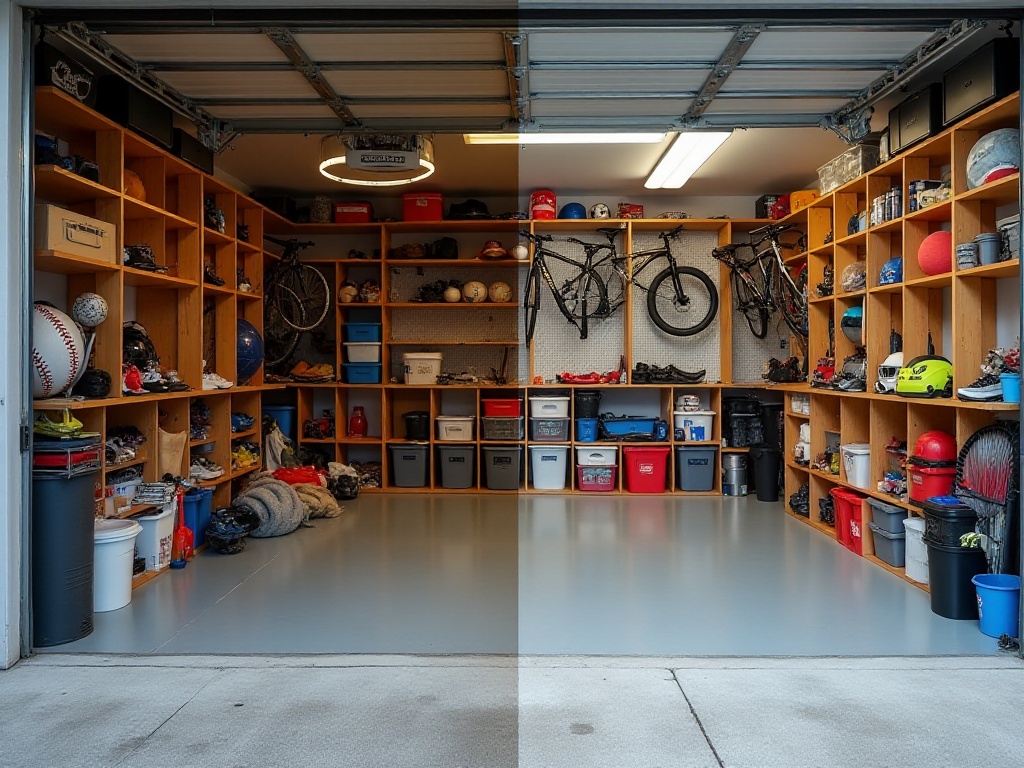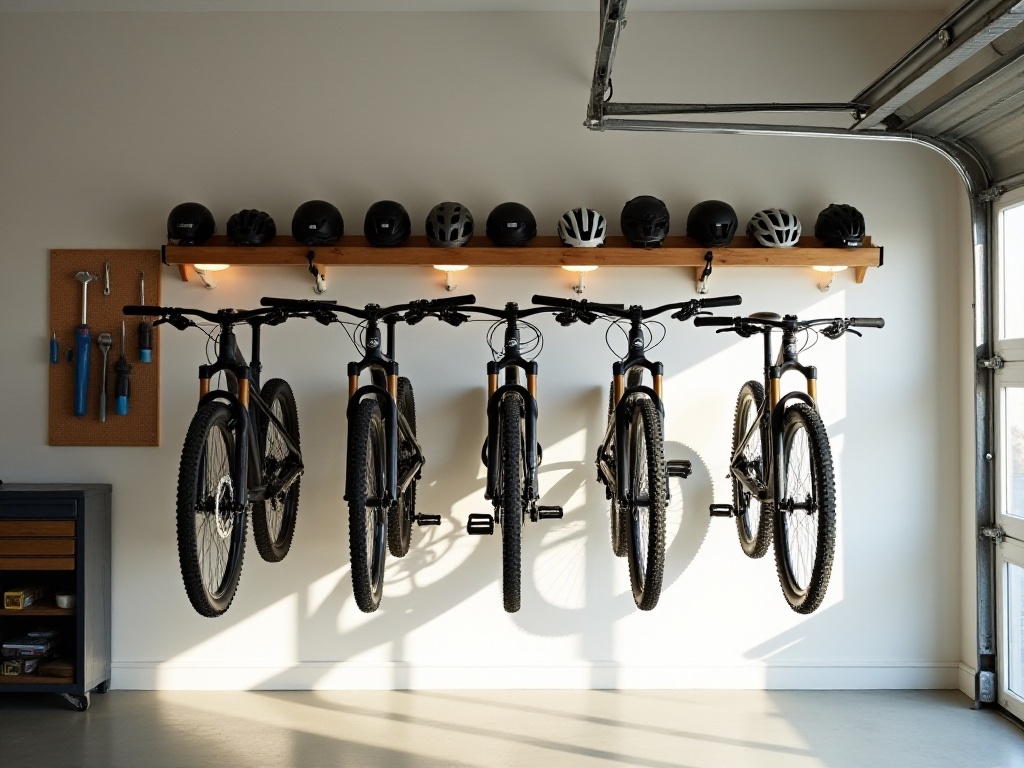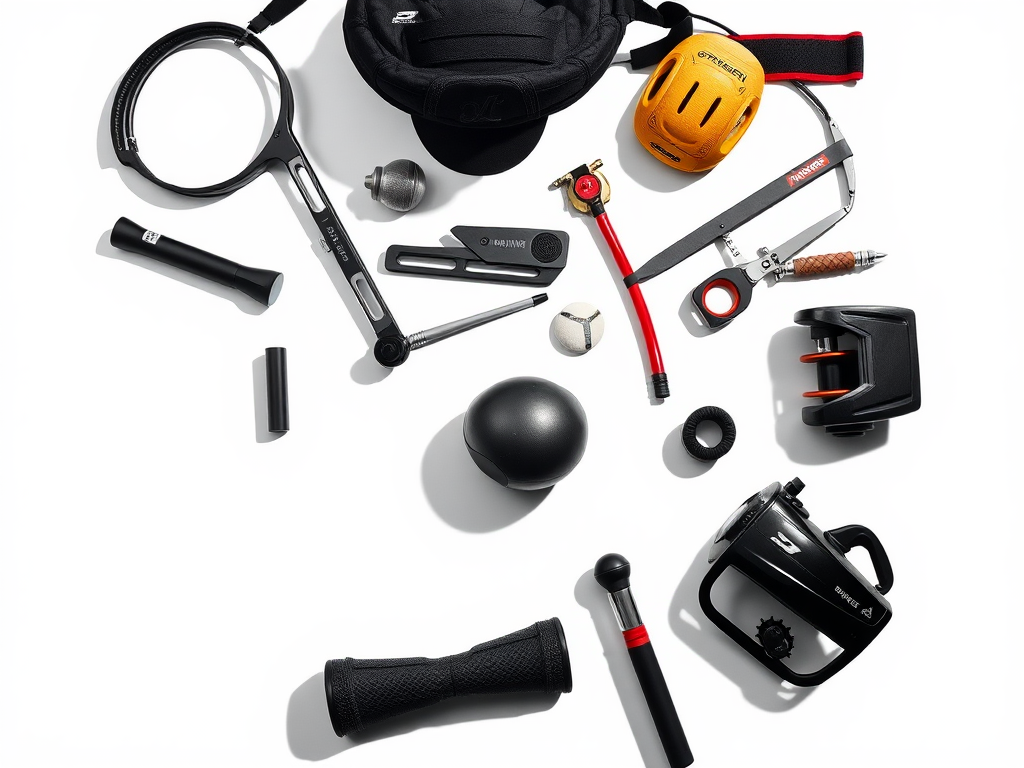Space Revolution
After recently moving into a new house, I realized I had too much sports equipment. From my beloved yoga mat to various dumbbells, from basketball essentials to badminton rackets for playing with friends - these items were cluttering my room and garage completely. Every time I wanted to exercise, I had to dig through everything, either unable to find or access equipment, which often made me give up working out. I believe many fitness enthusiasts face similar challenges. After some research and practice, I finally found the perfect storage solution, and today I'll share this "space revolution" experience with everyone.
Vertical Space Transformation
I remember last year my garage was a complete disaster zone. Bicycles were leaning haphazardly against walls, skateboards and yoga mats were lying scattered on the floor, and finding a tennis racket meant turning half the garage upside down. One day while cleaning, I had an epiphany - why not utilize all this empty wall space?
After some research, I decided to install a complete professional mounting system on the walls. This system includes several components: first, metal grid wall panels that are extremely sturdy and can support considerable weight; then, a series of adjustable hooks that can be positioned freely, with different sizes to accommodate various equipment; and finally, specialized mounts designed for specific equipment like bicycle racks and racket holders.
The results after installing this system were stunning. Equipment that once formed mountains on the floor was now neatly arranged on the walls, looking both tidy and stylish. Most exciting was that this storage method saved nearly 80% of floor space! Now I can finally park my car in the garage instead of leaving it outside in the rain.
Speaking of bicycle storage, I'd particularly like to share about this. I chose a mount that allows bikes to hang vertically on the wall, which is not only sturdy but also includes soft padding to protect the tires. Now both my bikes hang neatly on the wall, saving tons of space while remaining easily accessible - they can be lifted off with just a gentle pull.
For lighter equipment like tennis and badminton rackets, I installed specialized holders. These holders are wrapped in soft material to protect the rackets from scratches. Now I never have to worry about finding my rackets - I can spot them instantly, hanging neatly on the wall.
New Approach to Layout Organization
Wall storage alone wasn't enough, so I redesigned the entire storage space layout. During planning, I paid special attention to frequency of use. For example, items I use almost daily like yoga mats and dumbbells are placed in the most accessible positions, while winter equipment like ski gear is stored in higher locations.
To make storage more systematic, I designed a simple but practical zoning system in the garage. The entire space is divided into three main areas: the left side for throwing sports equipment, containing basketballs, volleyballs, frisbees, etc.; the right side for strength training equipment, with dumbbells, weight plates, resistance bands, etc.; and the middle section for daily essentials, storing frequently used small items.
This layout design has many benefits. First, it gives all equipment a fixed "home," preventing items from being misplaced. Second, keeping similar functional equipment together improves training efficiency. For instance, when I want to do strength training, I just stand in the right zone with all necessary equipment within reach. Finally, this zoning method is particularly suitable for seasonal adjustments - summer equipment can be placed in easily accessible positions while winter gear can be temporarily stored in the back.
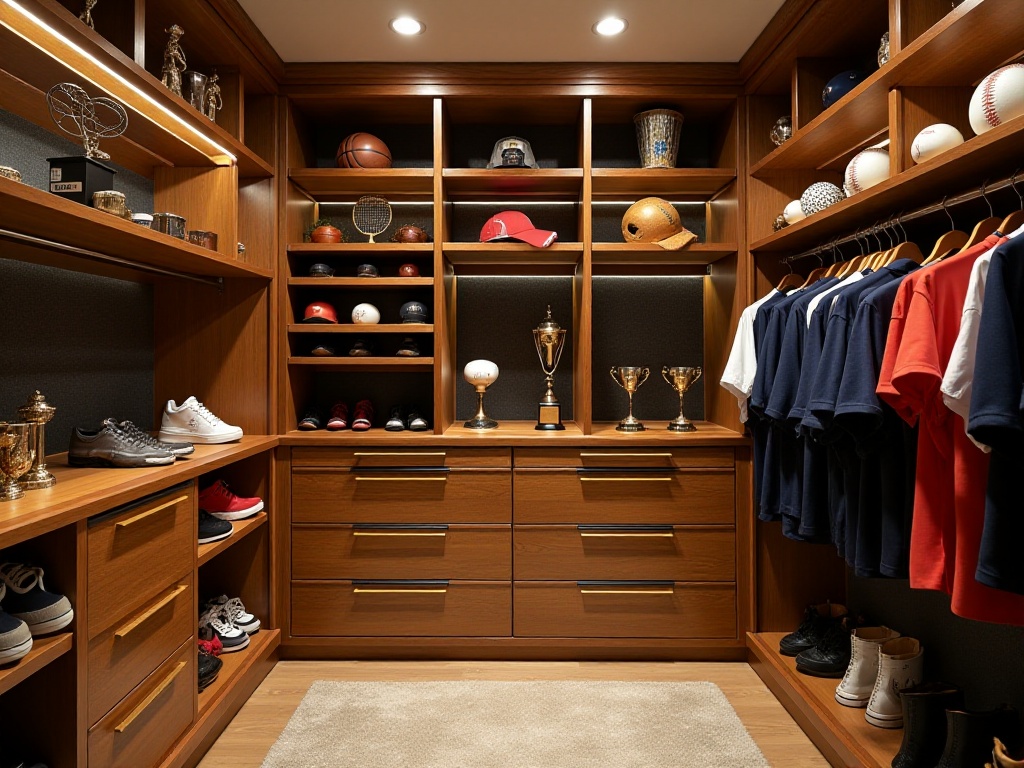
Storage Tips
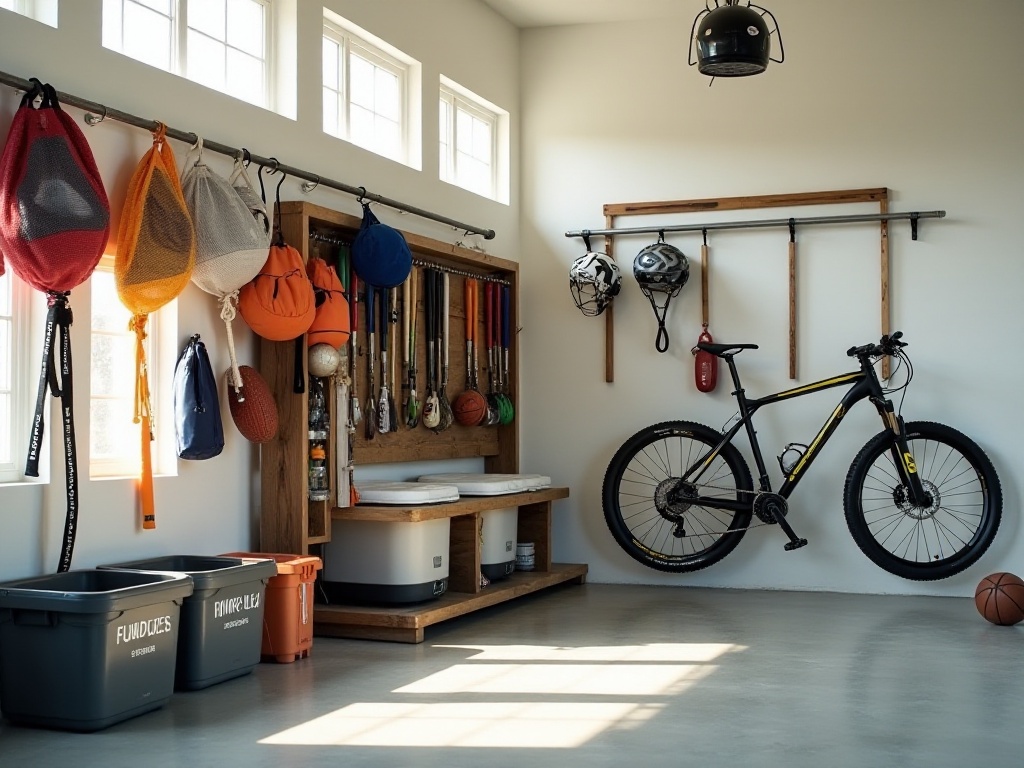
Smart Classification
During the design of this storage system, I discovered that scientific classification methods are incredibly important. After multiple attempts, I developed an effective set of classification principles: first categorize by sport type, then subdivide by frequency of use, and finally consider the equipment's size and weight characteristics.
Let me give a specific example. In the ball sports equipment category, I keep all related equipment in the same area but adjust specific positions based on usage frequency. For instance, since I frequently play basketball, the basketball is placed in the most accessible position; volleyball, which I use occasionally, goes on a slightly higher shelf; and the rarely used bowling ball is stored on the top level. With this classification method, I can now find any equipment very quickly, usually within 30 seconds.
Besides sport-type classification, I pay special attention to weight distribution. Heavy equipment goes at the bottom for both convenience and safety. For example, weight plates are neatly arranged on specialized racks on the ground, while lighter items like badminton rackets can be hung at higher positions.
Clever Use of Storage Boxes
For those easily misplaced small items like wristbands, headbands, and sports watches, I have a brilliant storage solution. I bought a six-compartment transparent storage box, with the biggest advantage being that you can see what's inside at a glance. I labeled each compartment, such as "Wristband Zone," "Headband Zone," "Timer Zone," etc., so I never mix up wristbands with knee pads anymore.
The choice of storage box material is also important. I chose transparent acrylic, which is not only durable but also easy to clean. The compartment sizes are carefully designed to fit common small items perfectly - not too big to waste space, not too small to be unusable.
To make storage even neater, I put small storage bags in each compartment. This way, even items of the same type can be subdivided by color or size. For example, sports socks can be sorted by length in different storage bags, making it clear at a glance when needed.
Proper Maintenance
Cleaning Secrets
When it comes to maintaining sports equipment, there's quite a bit to learn. I've developed a regular cleaning routine, spending 15 minutes every weekend doing basic cleaning of all equipment. This seemingly simple habit is actually crucial for extending equipment lifespan.
Take yoga mats for example, which require particularly careful cleaning due to frequent use. I prepare a cleaning solution using mild detergent, then gently wipe the entire mat surface with a soft cloth. After cleaning, it's essential to let it air dry naturally - never expose it to direct sunlight or use a hair dryer, as these could damage the mat material. With this simple maintenance method, my yoga mat still works like new after more than two years of use.
For metal equipment like dumbbells and barbells, I pay special attention to rust prevention. I wipe them with a dry towel after each use to remove any sweat residue. If I notice slight rust, I gently sand it with fine sandpaper, then apply a layer of rust-prevention oil. This maintains not only the equipment's appearance but more importantly ensures safe use.
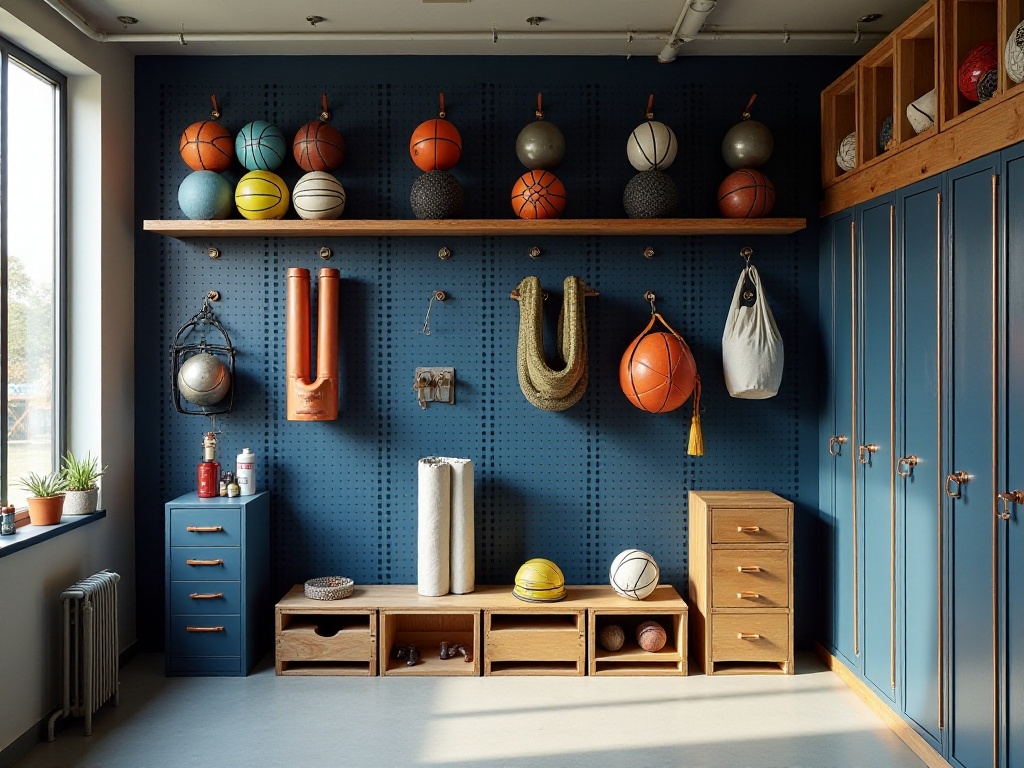
Odor Elimination Solutions
Many people encounter odor issues with sports equipment, especially with protective gear that gets sweaty - it can be really troublesome if not handled properly. After multiple experiments, I've discovered several particularly effective deodorizing methods.
The simplest method is putting protective gear in a sealed bag and freezing it for a few hours. This might sound strange, but it's really effective because the low temperature environment inhibits bacterial growth, thus reducing odors. Just remember to let the gear return to room temperature before using it.
Another method utilizes the power of sunlight. On clear days, place protective gear in a ventilated area to receive diffused sunlight, which both kills bacteria and eliminates odors. However, be careful not to expose it to direct sunlight, as intense light can damage the material. I usually dry items on the balcony or near windows, avoiding strong midday sun.
For equipment particularly prone to odors, like boxing gloves, I insert deodorizing sachets after use. These sachets contain activated charcoal that continuously absorbs odors. Remember to replace the sachets regularly to maintain optimal deodorizing effect.
Equipment Management
Protective Gear Storage
I have quite a few insights when it comes to storing protective gear. The most important principle is: don't stack, use hanging storage instead. I installed a row of specialized hooks on the wall, with each piece of protective gear having its own designated spot.
Helmet storage requires special attention as it needs both ventilation and shape preservation. I prepared a specialized rack for helmets with a clever design that supports the helmet's overall shape while providing adequate ventilation space. Smaller protective gear like knee and elbow pads are hung in mesh bags for ventilation and easy access.
To prevent protective gear from affecting each other, I deliberately left appropriate spacing between hooks. This not only looks neat but also prevents accidentally grabbing other gear when retrieving items. I placed labels under each hook so you can immediately see where each piece of protective gear belongs.
Equipment Storage
Storing large equipment is truly a technical challenge. For space-consuming equipment like treadmills and ellipticals, they can easily fill up an entire space if not well planned. My solution is: fold what can be folded, disassemble what can be disassembled.
My treadmill is foldable, and when not in use, it can be stored upright against the wall, saving nearly half the space. I specifically considered this when purchasing - although foldable models might be more expensive, they're definitely worth it in the long run.
For non-foldable equipment, I carefully plan their positions, trying to place them against walls while leaving sufficient activity space around them. Equipment placement also considers usage frequency, with frequently used items in easily accessible locations and less frequently used ones in corners.
Finally, I want to say that a good storage system can greatly increase motivation for exercise. When you see neatly organized sports equipment, you naturally feel the urge to work out. Moreover, a well-designed storage system not only makes your space look tidier but more importantly makes your workouts more efficient and enjoyable.
I hope these storage experiences can help those who also love sports. If you have any unique storage tips, feel free to share them in the comments!


